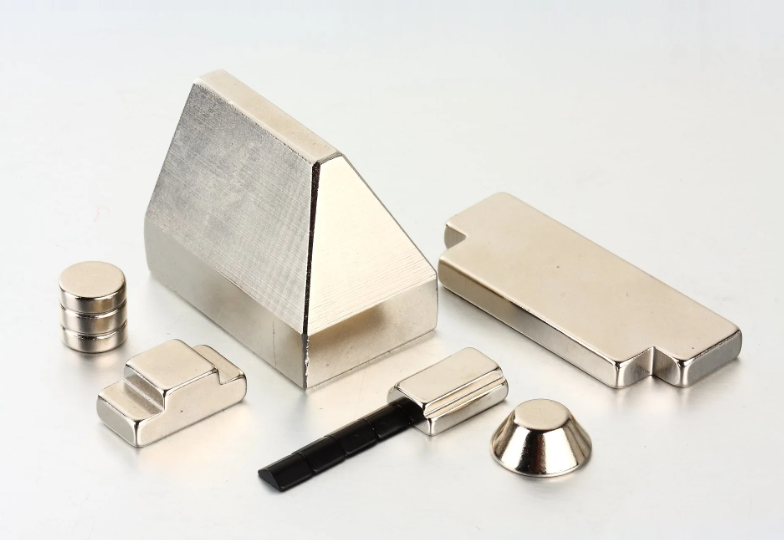As we all know, sintered NdFeb permanent magnets have superior magnetic properties, but when neodymium magnets are exposed to air or in a humid environment, the magnets are prone to corrosion, which also limits the further improvement and expansion of the application field of sintered neodymium magnets.
So what are the main reasons for the poor corrion resistance of sintered neodymium permanent magnet materials?
1. Root cause:
The chemical activity of neodymium element in sintered neodymium permanent magnet material is very high, and its standard electrode potential is E0 (Nd3+/Nd) = -2.431V. The sintered Neodymium Fe-boron permanent magnet itself is a heterogeneous structure, in which the ND-rich phase has the highest chemical activity, and there is a large electrochemical potential difference between the phases inside the material.
In the electrochemical environment, it is easy to produce electrochemical corrosion, and the grain boundary phase (Nd-rich phase) as the anode will bear a larger corrosion current, and the main phase (Nd2Fe14B phase) as the cathode will bear a smaller current, and eventually form the corrosion characteristics of small anode and large cathode, speeding up the corrosion of the intergranular phase, and eventually lead to the destruction of the entire magnet due to corrosion.
2. The structure of sintered NdFeb magnet itself:
The sintered Ndfeb magnet obtained by powder metallurgy method has low density, high porosity inside the magnet, and the surface of the magnet can not form a dense oxide film. Once oxidation occurs, the pores inside the magnet will become a rapid corrosion channel for the rapid diffusion of oxygen and other corrosion media, and a chain reaction can occur inside the magnet, resulting in oxidation and corrosion of the magnet itself.
The figure below shows a special irregular neodymium strong magnets

3. Harmful impurities in magnets:
Each link in the production of sintered neodymium magnet, it will lead to internal may contain magnets H, O, N, S, Si, C, Cl and chloride and other harmful impurities because of the influence of the production process, equipment, human factors. The most serious harmful impurities to the corrosion performance of magnets are O, Cl and chloride.
4, The impact of the working environment:
Sintered neodymium magnets are widely used in high and low temperature alternating, long-term maintenance free, extreme environment and other fields, sintered neodymium magnets are rarely used in harsh or vacuum environmental conditions, so different working environments put forward higher requirements for the corrosion resistance of sintered neodymium magnets.
In order to improve the corrosion resistance of neodymium iron boron magnets, measures such as electroplating, adding alloy elements, and controlling environmental conditions can be taken.
It should be noted that although the corrosion resistance of Ndfeb magnets is relatively poor, they can still provide excellent magnetic properties in dry and low corrosion environments.
The above is about the reasons for corrosion resistance of rare earth neodymium magnets and preventive measures, if you need more corrosion resistant magnet materials can also consider ceramic ferrite magnets, samarium cobalt magnets and so on.
Related articles Read:
Why are neodymium magnets need plated with nickel(NiCuNi)?
What problems should be paid attention to when using magnets?
 China Neodymium And Ferrite Magnets Manufacturer & Supplier
China Neodymium And Ferrite Magnets Manufacturer & Supplier 


